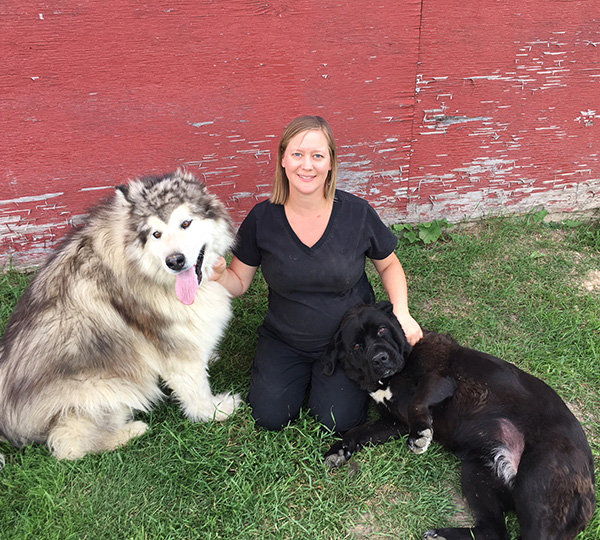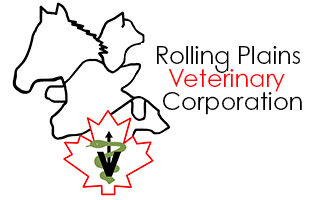
Body Talk: What Farm Animals Can Teach Us About Animal Physiology Compared to Cats and Dogs
December 3, 2024 2:15 pm Leave your thoughts
Understanding how animals’ bodies work can be fascinating, especially when comparing domesticated pets like cats and dogs to farm animals like cattle and horses. Each species has evolved unique physiological adaptations to suit their environments, roles, and lifestyles. These adaptations showcase nature’s ingenuity and highlight the incredible diversity of life.
The Basics of Physiology Across Species
Physiology is the study of how living organisms function, from their organs to their cellular processes. Whether it’s a cat, dog, cow, or horse, every animal has systems that work together to maintain life. However, the ways these systems adapt to different environments and roles in the animal kingdom are remarkable.
For example, while cats and dogs are carnivores and omnivores, respectively, cattle and horses are herbivores. This dietary difference has led to contrasting digestive systems, energy storage strategies, and metabolic processes. These differences are prime physiological adaptation examples in animals, reflecting the dynamic relationship between anatomy, diet, and habitat.
The Digestive System: Ruminants vs. Carnivores and Omnivores
One of the most striking differences between farm animals like cattle and companion animals like dogs and cats is their digestive system.
Farm Animals: Masters of Fermentation
Cattle are ruminants, meaning they have a four-compartment stomach designed for fermenting and digesting fibrous plant material. The rumen, reticulum, omasum, and abomasum work in harmony to break down tough cellulose found in grasses. This system allows cows to convert otherwise indigestible plant matter into energy and nutrients.
Horses, on the other hand, are hindgut fermenters. Unlike cattle, they have a simple stomach but rely on a large cecum to ferment fibrous material. This adaptation suits their grazing lifestyle, allowing them to extract nutrients from roughage efficiently.
Cats and Dogs: Streamlined Carnivorous Digestion
Cats, being obligate carnivores, have short and simple digestive tracts. Their stomachs and intestines are optimized to quickly process high-protein, high-fat diets. Dogs, as omnivores, have a slightly more versatile system but still lack the capacity to digest fibrous material like cattle or horses.
Key Takeaway
The digestive systems of farm animals are an excellent physiological adaptation example in animals, showcasing how dietary needs shape internal biology. Cats and dogs highlight the simplicity and efficiency required for meat-focused diets, while farm animals exhibit the complexity needed to thrive on plants.
Respiratory Systems: Efficiency in Action
Respiration is essential for all animals, but different species have evolved mechanisms tailored to their activity levels and oxygen demands.
Farm Animals: Built for Stamina
Horses, for instance, have a remarkable respiratory system that supports sustained physical exertion. Their large lungs, coupled with the ability to breathe only through their noses (obligate nasal breathing), ensure efficient oxygen delivery during activities like running or pulling heavy loads.
While cattle are not as agile as horses, they have a respiratory system optimized for their size. They rely on steady, rhythmic breathing to support their massive bodies, especially during rumination and metabolic processes.
Cats and Dogs: Speed and Agility
Cats and dogs, being more active predators, have developed a respiratory system suited for bursts of energy. Cats, for example, can sprint at high speeds and quickly recover thanks to their highly elastic lungs. Dogs, especially working breeds, have larger lung capacities relative to their size, enabling them to run for extended periods.
Key Takeaway
Farm animals emphasize endurance in their respiratory systems, while cats and dogs focus on agility and speed. These differences underscore how animals’ physiology adapts to their roles in survival and domestication.
Skeletal Systems: Strength vs. Agility
An animal’s skeleton provides the framework for movement, protection, and strength. Comparing farm animals to pets reveals fascinating variations in skeletal design.
Farm Animals: Power and Endurance
Horses have long, powerful legs and robust hooves, enabling them to cover great distances and bear significant weight. Their skeletal system is designed for speed and stamina, reflecting their evolution as prey animals that rely on running for survival. Similarly, cattle have sturdy, weight-bearing bones that allow them to stand for long hours grazing.
Cats and Dogs: Nimble Predators
Cats are known for their flexible spines and retractable claws, which provide agility and precision when hunting. Their skeletal adaptations allow for quick leaps, sharp turns, and silent movement. Dogs, depending on the breed, can either be built for speed (like Greyhounds) or strength (like Mastiffs). Their skeletons are versatile and reflect the diversity within the species.
Key Takeaway
The skeletal adaptations in farm animals highlight the need for strength and endurance, while cats and dogs demonstrate the importance of agility and precision in their predatory roles.
Thermoregulation: Coping with Climate
Animals must maintain a stable body temperature to survive, and their methods of thermoregulation vary widely.
Farm Animals: Weather Warriors
Cattle and horses are surprisingly resilient to extreme weather conditions. Cattle rely on their thick hides and a layer of fat for insulation during the winter, while horses develop a dense winter coat. Horses also have an efficient sweating system to cool down in the summer, a unique feature among farm animals.
Cats and Dogs: Masters of Adaptation
Cats and dogs use different strategies to regulate their body temperature. Cats, being desert-dwelling animals by origin, rely on grooming to cool themselves. Dogs, on the other hand, pant to release heat through evaporation. Both species are less tolerant of extreme temperatures compared to farm animals.
Key Takeaway
Thermoregulation is another compelling physiological adaptation example in animals, demonstrating how species adapt to their environments and lifestyles.
Behavioral Physiology: Brains at Work
While much of physiology is about physical adaptations, behavioral physiology reveals how animals’ nervous systems shape their interactions with the world.
Farm Animals: Herd Instincts
Farm animals like cattle and horses exhibit strong herd instincts, which are deeply rooted in their physiology. Their heightened peripheral vision and ability to detect subtle movements make them excellent at spotting predators. These adaptations are crucial for survival in open pastures.
Cats and Dogs: Independent Thinkers
Cats and dogs, as predators, have more individualistic behaviors. Cats rely on their keen sense of smell and night vision for hunting, while dogs are pack animals with a strong bond to their human “pack.” Their behavioral physiology highlights their roles as both companions and hunters.
Key Takeaway
Behavioral physiology showcases the link between an animal’s nervous system and its survival strategies. Farm animals focus on group dynamics, while pets emphasize individual roles.
The Fascinating World of Adaptations
The differences between farm animals and pets like cats and dogs offer a window into the adaptability of life. From their digestive systems to their respiratory and skeletal structures, every species has evolved to thrive in its unique niche. These differences are a testament to the diversity and beauty of the animal kingdom.
Contact Us Today
Understanding animal physiology is more than just a fascinating exploration—it’s essential for providing the best care for our beloved animals. Whether you’re raising cattle and horses or sharing your home with cats and dogs, their unique physiological needs require attentive and knowledgeable care.
At Rolling Plains Veterinary Corporation, we pride ourselves on our expertise and commitment to animal health. Our trusted, professional veterinary clinics offer peace of mind for animal owners across Canada and beyond. From administering preventive pet medications to treating emergent conditions, we’re here for all your animal health needs.
Whether it’s a routine check-up for your dog, vaccinations for your cat, or emergency care for your horse, we’re ready to help. Contact us today to ensure your animals—big or small—stay happy and healthy. Let our tenured professionals provide the care and support you can trust. Together, we’ll make sure your animals thrive!
Categorised in: Pet Owners
This post was written by Dr. Marc Phillipot
